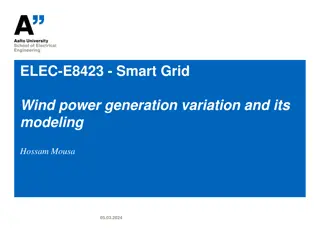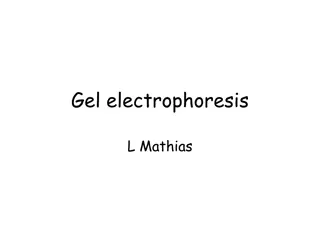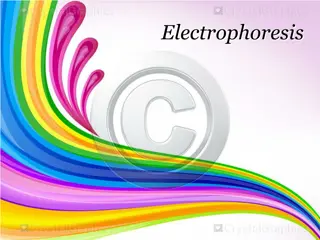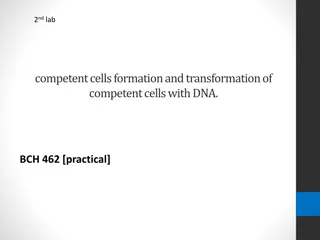Genetic Engineering with Restriction Endonucleases and Electrophoresis
Strategies using only restriction endonucleases and electrophoresis to solve plasmid cloning problems, aiming to move the gene for Miraculin into an expression vector. Answer questions related to gene cutting, fragment size determination, ligation outcomes, and growth medium considerations.
Download Presentation

Please find below an Image/Link to download the presentation.
The content on the website is provided AS IS for your information and personal use only. It may not be sold, licensed, or shared on other websites without obtaining consent from the author.If you encounter any issues during the download, it is possible that the publisher has removed the file from their server.
You are allowed to download the files provided on this website for personal or commercial use, subject to the condition that they are used lawfully. All files are the property of their respective owners.
The content on the website is provided AS IS for your information and personal use only. It may not be sold, licensed, or shared on other websites without obtaining consent from the author.
E N D
Presentation Transcript
LEARNING OBJECTIVES Proper use of restriction endonucleases Proper use of restriction endonucleases Tying restriction fragmentation to electrophoresis Tying restriction fragmentation to electrophoresis Critical Thinking Critical Thinking Use of internet resources Use of internet resources Students will need to develop strategies using only restriction endonucleases and Students will need to develop strategies using only restriction endonucleases and electrophoresis to solve plasmid cloning problems. electrophoresis to solve plasmid cloning problems.
Goal: Move the Gene for Goal: Move the Gene for Miraculin Miraculin into an Expression Vector into an Expression Vector Miraculin Miraculin a glycoprotein produced by the berry a glycoprotein produced by the berry Synsepalum Synsepalum dulcificum dulcificum Alters the perception of flavors Alters the perception of flavors acid acid sweet sweet Binds strongly to sweet taste receptors Binds strongly to sweet taste receptors When exposed to acid, changes configuration When exposed to acid, changes configuration Bound saccharides interact with receptors to induce taste Bound saccharides interact with receptors to induce taste Effects last for over an hour Effects last for over an hour
QUESTION #1 What enzymes would you use to cut out the gene for Miraculin? A. BamHI and NotI B. PstI and NotI C. BamHI and EcoRI D. PstI and EcoRI E. PstI and CiaI
QUESTION #2 What size fragments would you create if you cut pSource I and pTarget with PstI and NotI? Write your answer on the back of a card with marker provided.
QUESTION #3 Assuming that only plasmids with a single origin of replication are possible, which of the following products will not be made when ligase is added to the mixture? A. B. C. D. 5500bp E. 6260bp 3000bp 6300bp 2240bp
QUESTION #4 If the growth medium contains ampicillin, which of the following ligation products could you detect inside colonies of transformed bacteria? (more than one answer may be correct) A. B. C. D. 5500bp E. 6260bp 3000bp 6300bp 2240bp
STUDENT HOMEWORK, PART I Students would be directed to create a scheme for distinguishing between the two Students would be directed to create a scheme for distinguishing between the two potential isolates, the regenerated potential isolates, the regenerated pTarget pTarget vector and the recombinant containing vector. containing vector. vector and the recombinant Miraculin Miraculin- - Students would then draw gels showing the products from their restriction analysis Students would then draw gels showing the products from their restriction analysis and describe how they would distinguish the recombinant vector. and describe how they would distinguish the recombinant vector. And now, Challenge II And now, Challenge II
QUESTION #5 What enzymes would you use to cut out the gene for Miraculin? A. BamHI and SmaI B. EcoRV and HaeIII C. BamHI and EcoRI D. CiaI and EcoRI E. HaeIII and SmaI
QUESTION #6 What size fragments would you create if you cut pSource II and pTarget with HaeIII and SmaI? Write your answer on the back of a card with marker provided.
QUESTION #7 Assuming that only plasmids with a single origin of replication are possible, which of the following products will not be made when ligase is added to the mixture? A. B. C. D. 5500bp E. 6300bp 3000bp 6250bp 2250bp
QUESTION #8 If the growth medium contains ampicillin, which of the following ligation products could you detect inside colonies of transformed bacteria? (more than one answer may be correct) A. B. C. D. 5500bp E. 6300bp 3000bp 6250bp 2250bp
THE PROBLEM OF INSERTION Blunt Blunt- -end versus sticky end versus sticky- -end cutters end cutters
QUESTION #9 What additional ligation products might you detect inside colonies of transformed bacteria? Write size in base pairs on the back of your card.
STUDENT HOMEWORK, PART II Students would be directed to create a scheme for distinguishing between the two Students would be directed to create a scheme for distinguishing between the two potential isolates, the regenerated potential isolates, the regenerated pTarget pTarget vector and the recombinant containing vector. containing vector. vector and the recombinant Miraculin Miraculin- - For you, Question #10: For you, Question #10: What restriction enzyme would you use to create unique fragments that would help distinguish between pTarget and the recombinant plasmid? A. HaeIII B. CiaI C. EcoRI D. HindIII E. SmaI


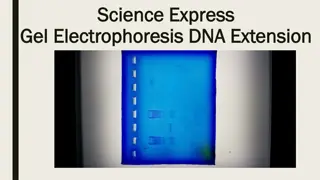
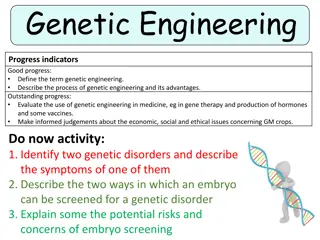
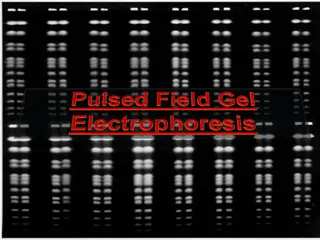
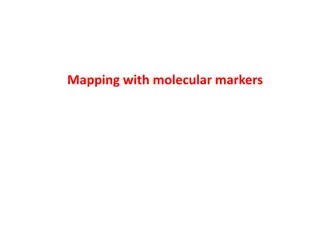
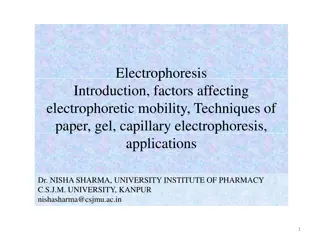

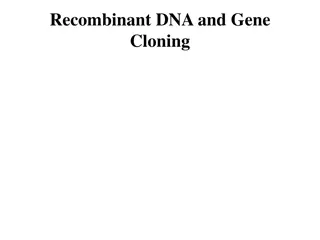





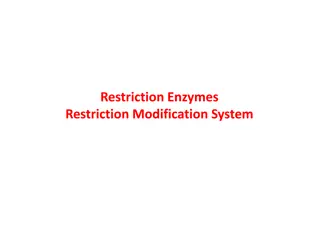
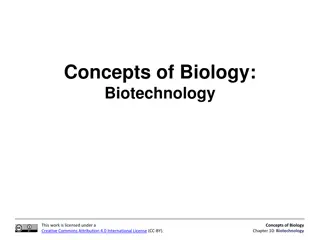
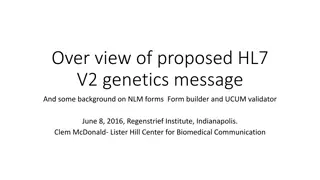
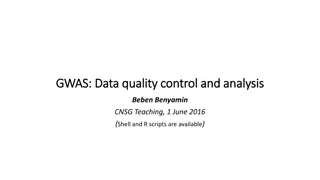

![BCH 462- Biotechnology & Genetic engineering [Practical]](/thumb/273367/bch-462-biotechnology-genetic-engineering-practical.jpg)
